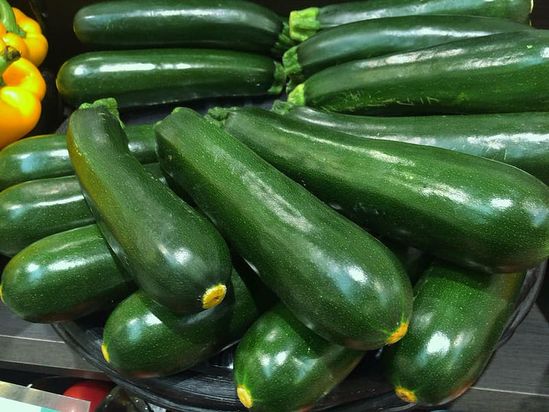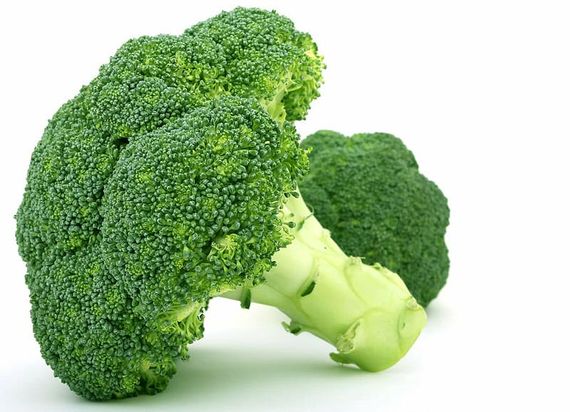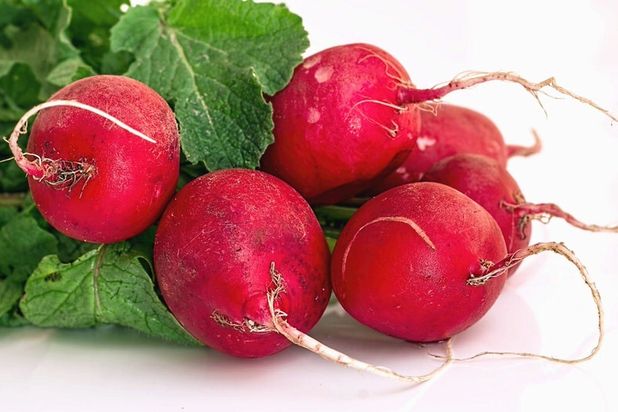10 Raw Vegetables You Should Try
Incorporating raw vegetables into your diet can bring a refreshing burst of natural flavors and provide optimal health benefits from various nutrients. Raw vegetables are vital in disease prevention, increasing energy levels, promoting healthy skin, and improving digestion. There are many ways to incorporate raw vegetables into your diet, such as salads, smoothies, and low-carb snacks. Doing so can help maintain a healthy lifestyle and even shed excess weight.
Check out the top 10 vegetables that you can eat raw.
10Cauliflower

Add cauliflower to your diet to boost your nutrient intake and improve your health. This versatile vegetable can help reduce body weight and lower the risk of heart disease and cancer. It’s relatively inexpensive and easy to find, making it a great addition to any meal. One cup of raw cauliflower contains about 2 grams of fiber, a rich amount of protein, vitamins, minerals, and antioxidants.
You don’t need to do much to prepare it – simply chop it up and enjoy it raw as a snack, dipped in hummus or another healthy dip. Raw cauliflower florets are delicious and can be a great way to satisfy your hunger between meals. You can also use raw cauliflower as a side dish or ingredient in various recipes.
9Zucchini

Zucchini is a delicious and healthy vegetable that you can enjoy, either raw or cooked. When raw, its mild taste is refreshing in salads, especially when mixed with lots of lemon and fresh herbs. To make it easier to eat, try slicing them thinly. Although most commercial zucchini varieties are safe and delicious, it is important to wash them thoroughly to minimize the risk of food poisoning.
If you bite an extremely bitter zucchini, it is advisable to dispose of it immediately, as it can harm you due to high concentrations of cucurbitacins. When boiling zucchini, water-soluble vitamins like vitamin C may be lost, so eat them raw to enjoy its essential minerals and nutrients. Moreover, ensure storing it appropriately in the refrigerator to avoid contamination from bacteria.
8Broccoli

Did you know that broccoli is a dark green vegetable with rich nutrients and very few calories? It is great for keeping your blood and digestive systems healthy. If you want to enjoy the benefits of broccoli without any hassle, try eating it raw. Simply cleaning off any obvious dirt and patting it dry with a paper towel help make them completely safe to eat.
Both its florets and stems are easier to chew if you cut them thin. Adding raw broccoli to your tossed salad or pasta dish helps give it some texture, flavor, and nutritional value. Eating broccoli regularly can help reduce your risk of heart disease, stroke, and certain types of cancer.
7Radish

Did you know that radishes are not only delicious but also highly nutritious? This edible root vegetable comes in various colors, such as red, pink, purple, and white, and has a unique spicy-sweet taste. Raw radishes are an excellent addition to salads, tacos, or even as a crunchy snack when dipped in salted butter. Radishes are packed with nutrients, making them a healthy choice for your diet.
They are rich in dietary fiber, which aids in digestion and alleviates constipation symptoms. Radishes also promote proper liver function and reduce inflammation. Their low indigestible carbohydrate and high water content make them a perfect food for weight loss. So, try radishes next time you want a healthy and tasty vegetable!
6Celery

Did you know that celery is a green vegetable with a crispy and crunchy texture that can give you numerous health benefits? It has anti-inflammatory and antioxidant properties that could help with digestion. To get the most nutrients from celery, consume it raw. Steaming it for 10 minutes won’t affect the antioxidant content, but boiling it can significantly reduce its nutritional value.
A single celery stalk contains at least 12 different antioxidant nutrients and vitamin C, beta carotene, and flavonoids. Adding celery to your diet can give you essential vitamins like A, K, and C and minerals like potassium and folate. If you want to enjoy the benefits of celery leaves, consuming them within two days of purchase without storing them is best.
5Bell Pepper

Bell Peppers are a type of versatile vegetable that belongs to the nightshade family and come in various colors, such as red, yellow, orange, and green. Unripe green peppers typically taste slightly more bitter than sweet and fully ripe ones. A hundred grams of fresh and raw bell peppers are made up of 92 percent water and provide 1 g of protein, 6 g of carbs, and 2.1 g of dietary fiber.
These vegetables also have antioxidant properties that can help protect against certain cancers and cardiovascular diseases. Although unripe green peppers are edible and offer fiber and vitamins, the ripened peppers are sweeter and contain more calories and carbohydrates than green peppers.
4Spinach

Did you know that spinach is an incredibly nutritious leafy green vegetable? Packed with antioxidants and nutrients, consuming spinach can offer many health benefits. These benefits include promoting healthy eyes, reducing oxidative stress, protecting against cancer, and regulating blood pressure levels. In fact, just 100 grams of raw spinach contains 2.9 grams of protein, 3.6 grams of carbs, and 2.2 grams of fiber.
Additionally, spinach is a great source of vitamins A, C, K, and B. To get the most out of your spinach, try eating it raw. Boiling or steaming can cause a loss of important water-soluble nutrients such as folate, B vitamins, and thiamin. So, if you want to maximize the nutritional value of your spinach, try consuming it raw with minimal preparation.
3Tomato

Although tomatoes are classified as fruits from a botanical perspective, they are commonly consumed and cooked like vegetables. Tomatoes come in various shapes and colors but often appear round and red. They have a pleasantly sweet and tangy flavor that provides a refreshing sensation when consumed raw.
A cup of small, raw tomatoes contains 0.9 grams of protein, 3.9 grams of carbohydrates, and 1.2 grams of fiber. Tomatoes are relatively acidic and contain 95% water, making them an excellent source of hydration and essential vitamins and minerals such as vitamin A, carotenoids, and vitamin C. A high concentration of lycopene, an antioxidant, is especially beneficial for the heart and skin health.
2Cucumber

Cucumber is a healthy fruit with a high water content that is beneficial for lowering blood sugar, preventing constipation, and aiding in weight loss. Try eating unpeeled to maximize cucumbers’ health benefits and nutrient content. Peeling cucumbers can lead to a reduction in fiber, as well as certain vitamins and minerals.
Cucumbers are low in calories but have a high water content, contributing to about 96% of recommended and soluble fiber, which promotes hydration and supports weight loss. A 300-gram serving of unpeeled raw cucumber offers 11 grams of carbs and 2 grams of protein and fiber. Cucumbers contain antioxidants like flavonoids and tannins that prevent the accumulation of harmful free radicals and reduce the risk of chronic diseases.
1Carrot

Did you know that raw carrots contain many nutrients and offer various health benefits? Unlike cooked carrots, raw ones are rich in vitamins, minerals, and antioxidant compounds, making them a great addition to any healthy diet. Eating carrots can help support your immune function, reduce the risk of certain cancers, promote wound healing, and improve your digestive health.
Carrots’ high vitamin A content is essential for maintaining good eye health and preventing vision issues like night blindness. Antioxidants in carrots can help eliminate harmful free radicals that can damage your cells. And the dietary carotenoids like Lutein and zeaxanthin found in carrots can even help lower your risk of certain cancers.